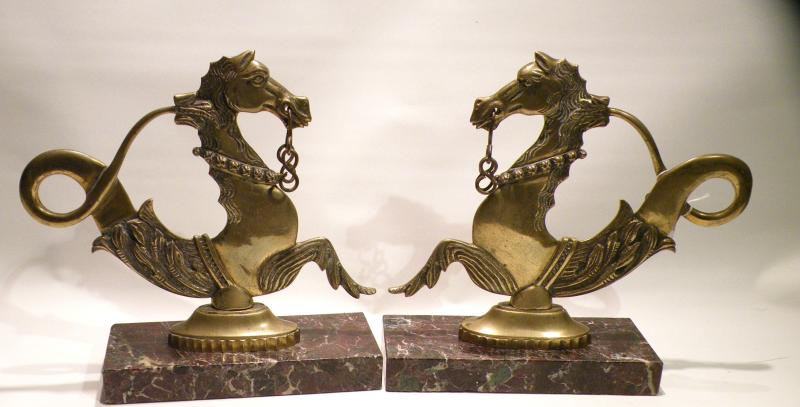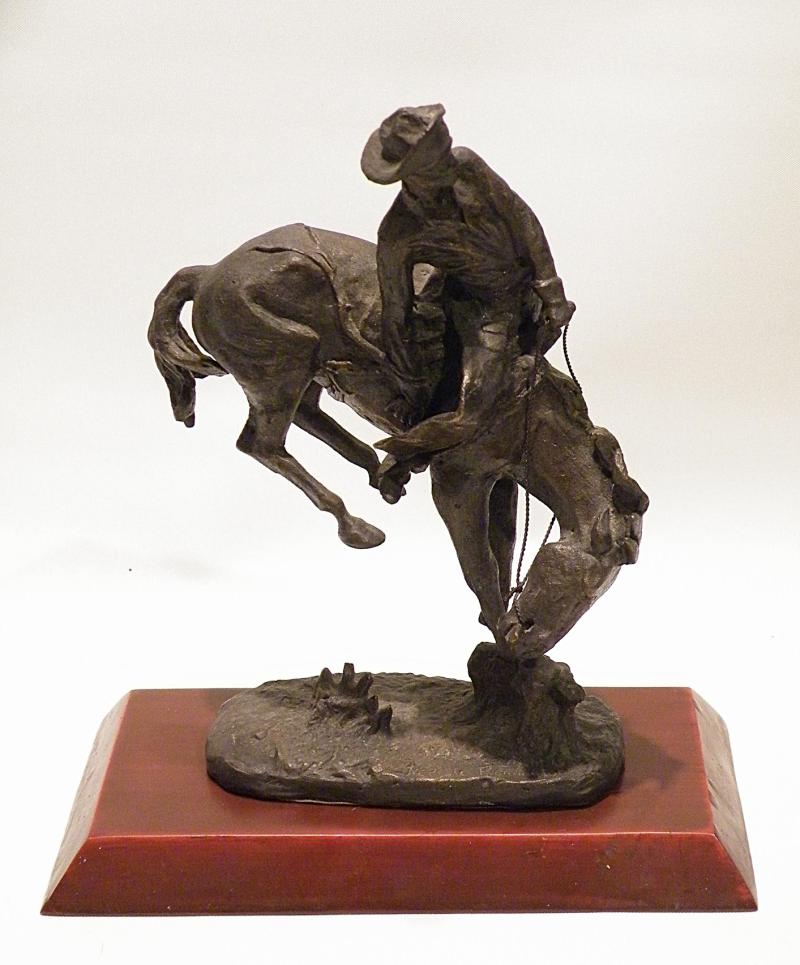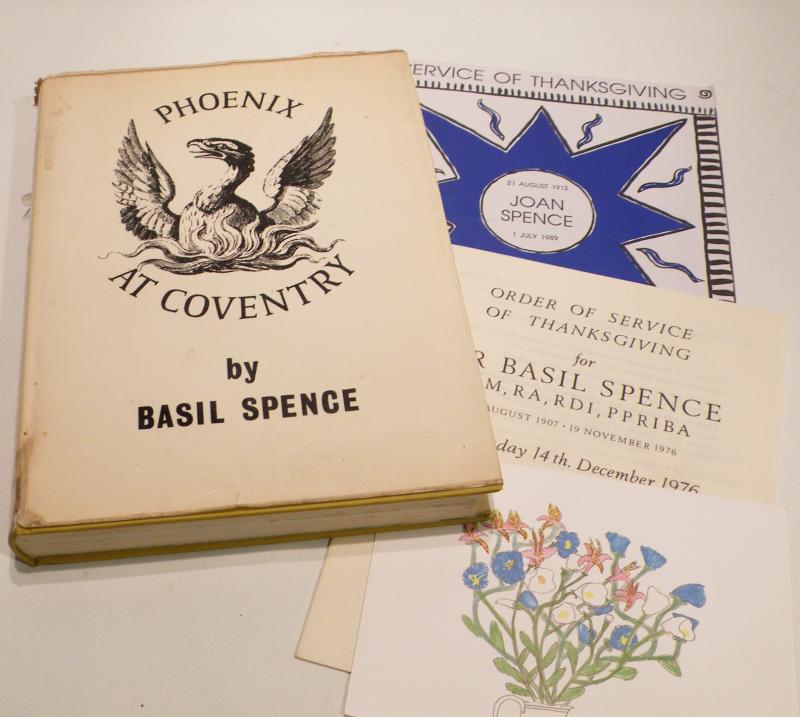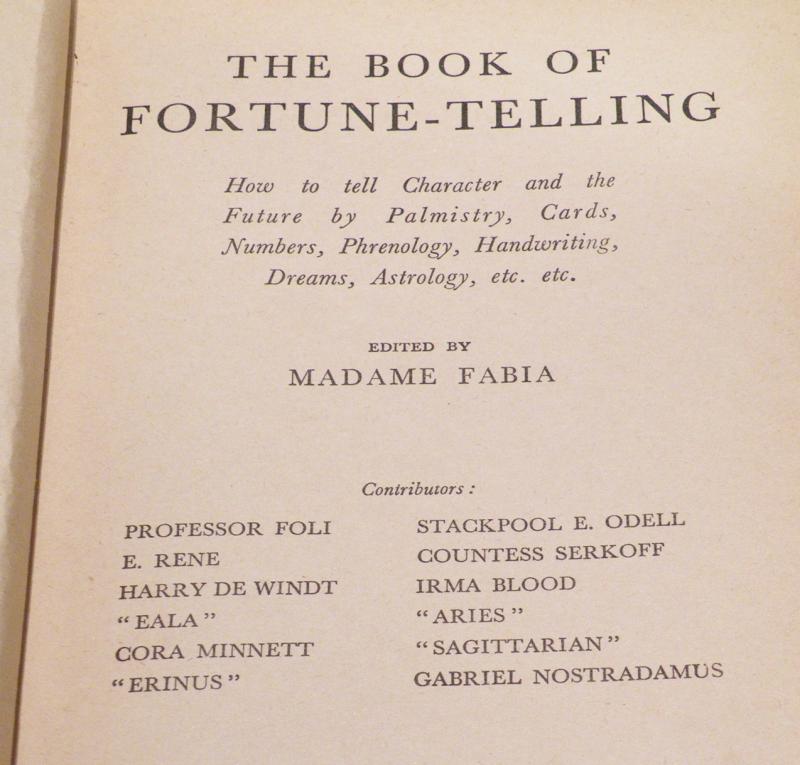JANUARY SALE
Genuine clearance sale.
Many bulk lots all priced to clear.
Starts Saturday January 17th read more
Price
on
Request
Art Deco Bronze Sculpture of Dance.
An Art Decco cast bronze figure of ‘Dance’ beautiful casting but as far as I can see it is unsigned and I cannot find another example.
It is in superb condition on a solid marble base. It measures 14 inches high and 5.5 x 4.75 inches at the base. Heavy, so she will have to be sent via courier at £13.95. read more
Pair Antique Brass Venetian Gondola Horses.
Pair of original Venetian Gondola Horses made of solid brass which once stood on the sides the famous Italian watercraft. They are now fitted to Italian marble bases, so quite heavy but beautiful sideboard or fireplace pieces which measure; bases 9 x 3.5 inches. Horses 12 x 11 inches high.
Very heavy pieces so the shipping will be £13.95 read more
125.00 GBP
Antique Niello silver Fob Watch.
A stunning small silver pocket watch decorated with Niello, a black inlay produced by engraving designs and filling the lines with a paste or powder made of sulphur, copper, silver, and lead. The process involves heating the metal to fuse the niello into the engraved grooves. This lovely little watch has a Swiss movement and comes in good working order, just cleaned and serviced and keeps good ... read more
75.00 GBP
Bronze Sculpture ‘The Outlaw’ Frederick Reminigton.
A vintage solid bronze figure of the outlaw by Frederick Remington and produced as a limited edition by Franklin Mint under the authorisation of the Frederick Remington Art Museum in 1988.
In perfect condition and measuring 7 inches high. read more
55.00 GBP
Pair of 18th Century Bronze Candlesticks.
A superb pair of Georgian bronze candle sticks with original pushers in the base, one working the other needs freeing up. In very good order with obvious signs of use and wear. they measure 7.5 inches high. read more
Antique Bronze Figure of Medieval Trumpeter.
A small er size solid bronze figure of a medieval soldier riding his charger on a solid marble base. This may be one part of a garniture, nicely cast and in very good condition. It measures 8 inches high x 7.5 inches long. Small but very heavy. read more
32.00 GBP
Stunning Butler of Sheffield A1 Plate set of Cutlery Pistol Grip & Rat Tail
If you ever wanted to dine in style this Christmas then this table cutlery is the finest outside of Sterling silver you can buy, made by George Butler of Sheffield and comes in A1 plate, the finest of silver plate, the collection is made up of two patterns, the unusual pistol grip and the traditional Old English pattern however this pattern also includes the rarer rat tail on the backs, in the... read more
145.00 GBP
Book – Coventry Interest – Rare Author Signed Phoenix at Coventry
This book is entitled ‘Phoenix at Coventry’, it was written by Basil Spence and is signed by him on the inner cover and is dated 1976. The book dates from 1962 and covers the re-building of Coventry cathedral following the bombing during the Blitz, Basil Spence was the architect who designed the re-build, a man greatly respected for his work he died in December of 1976 so the book was signed in... read more
45.00 GBP
Scarce First Edition 1935 The Book of Fortune Telling by Madame Fabia
Designed more to entertain rather than preach about fortune telling this interesting first edition book written by ‘madame Fabia’ covers most subjects in the fortune telling genre, I believe this book to be circa 1935 as it is not dated and the earliest example I can find is dated for ’35 so this could be earlier. An interesting read having over 500 pages of text with a few pictures, it comes i... read more
35.00 GBP











